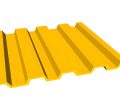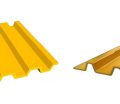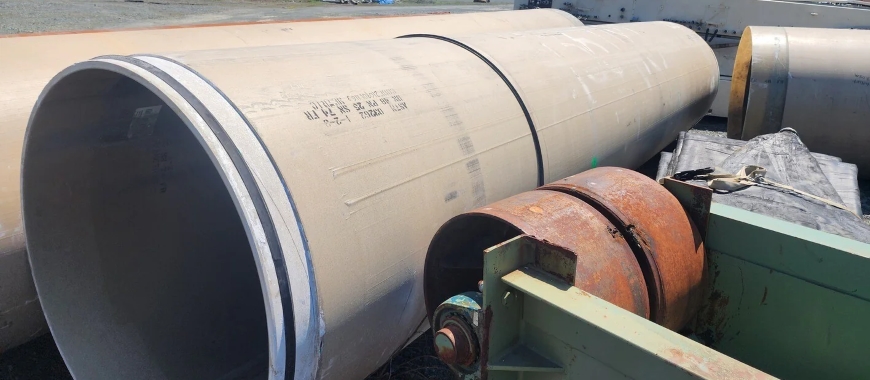
FRP pipe class refers to the classification of Fiberglass Reinforced Plastic pipes based on specific criteria like pressure rating, material composition, and application requirements. These classes help determine the pipe’s suitability for various industrial uses, ensuring it can withstand the demands of the environment it will be used in. For example, China FRP cable threading pipe falls under specific classes based on its material properties and intended use, providing a reliable solution for cable installation in various environments. Understanding the FRP pipe class is crucial for selecting the right piping, as it ensures that the pipe meets the necessary performance standards. Factors such as the type of fluid being transported, operating pressure, temperature, and environmental conditions all influence the appropriate class of FRP pipe for a given application. FRP pipe class defines the pressure, stiffness, and temperature ratings of FRP pipes, widely used in chemical and oil and gas industries.
Factors Affecting FRP Pipe Class
FRP pipe class refers to the categorization of fiberglass-reinforced plastic (FRP) pipes based on their mechanical and physical properties, including pressure ratings, temperature tolerance, and structural strength. These classes are essential for specifying the right type of FRP pipe for various industrial applications, ensuring that the piping system can withstand the operational demands it faces. GangLong Fiberglass produces a range of types of frp pipes designed to meet the diverse requirements of industries such as chemical processing, water treatment, and oil and gas transport.
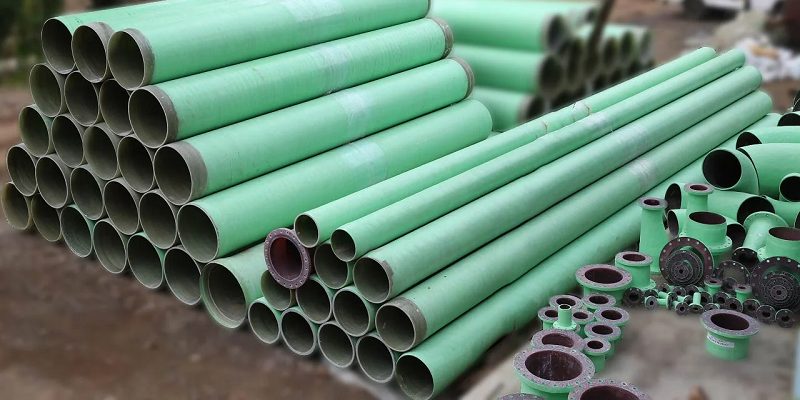
FRP Pipe Class General Factors
FRP pipe class defines the performance characteristics of an FRP pipe, including its pressure rating, stiffness, and temperature resistance. Fiberglass Reinforced Plastic (FRP) pipes can be classified by a number of factors, including:
- Pressure Rating: One of the primary factors determining the FRP pipe class is its pressure rating, which indicates the maximum internal pressure the pipe can safely withstand. Pressure ratings are typically expressed in pounds per square inch (psi) or bars. The pressure rating is influenced by factors such as the pipe’s wall thickness, the type of resin used, and the construction method. Higher-pressure classes are designed for applications involving elevated pressures, such as chemical transport and high-pressure fluid transfer. One of the primary determinants of an FRP pipe class is its pressure rating, which indicates the maximum internal pressure the pipe can endure without failure. Pressure ratings are typically expressed in pounds per square inch (psi) or bars. The pressure rating of an FRP pipe is influenced by several factors, including its wall thickness, the type of resin used in its construction, and the manufacturing process. Additionally, FRP pipe density plays a significant role in determining the pipe’s overall strength and performance under pressure, making it essential to consider these aspects during selection.Higher pressure ratings are suitable for applications involving high-pressure fluid transport, ensuring that the pipe can operate safely under demanding conditions.
- Temperature Tolerance: FRP pipe class also considers the temperature tolerance of the pipe. FRP pipes are designed to operate within a specific temperature range, with higher classes capable of withstanding higher temperatures. The use of clear epoxy resin for FRP pipe significantly enhances temperature resistance, ensuring the pipe’s structural integrity and performance in applications involving hot fluids, steam, or thermal cycling. This resin’s superior thermal stability makes it an ideal choice for pipes used in demanding environments, where consistent temperature resistance is critical. Temperature Tolerance: Another critical factor in the classification of FRP pipes is their temperature tolerance. Different FRP pipe classes are designed to handle varying temperature ranges, with some capable of withstanding high temperatures while others are suited for lower-temperature applications. High temperature FRP pipes, often constructed using advanced resin types such as epoxy or vinyl ester, are specifically engineered for applications involving hot fluids, steam, or processes requiring thermal cycling. The resin type plays a significant role in determining the pipe’s temperature resistance, ensuring reliable performance in demanding environments.
- Structural Strength and Stiffness: The structural strength and stiffness of an FRP pipe are also factors in its classification. Stiffness is an indicator of the pipe’s ability to resist deformation under external loads, such as soil pressure or traffic loads. Higher stiffness classes are suitable for underground installations or environments where the pipe is subjected to external forces. The structural integrity of the pipe ensures that it maintains its shape and performance over its service life.
- Resin type: FRP pipes can be made from different resin materials, such as isophthalic polyester, general purpose, isophthalic polyester with extra fire retardant, and phenolic.
- Applications: FRP pipes can be used for a variety of applications, including water, wastewater, hydropower, industrial, municipal, and rehabilitation
FRP Pipe Class Safety Category Standards
The FRP pipe MSDS may categorize the material into various hazard classes based on its physical, chemical, and toxicological properties. These hazard classes provide information on the material’s safety and potential risks during handling, use, or disposal. Below is an overview of how FRP pipes could be classified in different safety categories:
Physical Hazard Classification:
- Class: Combustible (Fire Hazard)
FRP pipes may be classified as combustible materials depending on the resin type used. Polyester and vinyl ester resins, which are commonly used in FRP pipes, can be flammable, though fiberglass itself is non-flammable. The MSDS would specify the flash point and auto-ignition temperature of the resin, indicating how easily the material could catch fire or sustain combustion under certain conditions. - Class: Reactive (Chemical Hazard)
FRP pipes generally have low reactivity, but the resins and additives used in the composite can sometimes react with chemicals or heat. They may be classified as moderately reactive depending on the specific resin system and any curing agents used in the manufacturing process.
Health Hazard Classification:
- Class: Irritant
FRP pipes may be classified as irritants to the skin, eyes, or respiratory system. Exposure to fiberglass dust during cutting or grinding operations can cause irritation to the skin or respiratory tract. Resin vapors or particles can also irritate the eyes and mucous membranes. - Class: Sensitizer
Some of the chemicals in the resins (especially epoxy or polyester resins) can act as sensitizers, causing allergic reactions in individuals who are exposed repeatedly. Symptoms may include skin rashes, swelling, or difficulty breathing. - Class: Toxic
Depending on the resin, FRP pipes could potentially be classified as toxic in certain cases, especially if resin fumes or dust are inhaled in significant quantities over time. Some resins may contain hazardous compounds like styrene, which can be harmful if inhaled in large amounts. - Class: Carcinogen
The MSDS might indicate that long-term exposure to certain resins, especially during manufacturing or cutting processes, can lead to potential carcinogenic risks due to the inhalation of fiberglass dust or exposure to harmful chemicals. For example, styrene, a common monomer in polyester resin, is listed as a possible human carcinogen by the International Agency for Research on Cancer (IARC).
Environmental Hazard Classification:
- Class: Hazardous to the Aquatic Environment
FRP pipes are generally not highly hazardous to the environment; however, improper disposal of the material (especially resin-based waste) can pose risks to aquatic life. Certain resin systems might leach toxic substances if not disposed of properly, which could result in contamination of water sources.
Handling and Storage Classifications:
- Class: Stable under Normal Conditions
FRP pipes are generally stable and do not pose significant hazard risks under typical conditions of use, transport, or storage. However, the MSDS may recommend storing them away from direct sunlight and extreme heat to avoid degradation of the resin. - Class: Containment and Disposal
Waste FRP materials should be classified as non-recyclable in some regions due to the complexity of separating fiberglass from resin for recycling purposes. Proper disposal methods, including special waste treatment or incineration, should be followed according to local regulations.
Special Risk Classes:
- Class: Non-Resilient to Thermal Degradation
At high temperatures, the resin in FRP pipes may begin to degrade, releasing harmful fumes or toxic gases, which could pose an additional risk during fire scenarios.
These classifications help determine the handling procedures, safety protocols, and necessary personal protective equipment (PPE) when working with or around FRP pipes, as well as the disposal and environmental impact considerations. Always refer to the specific MSDS for the precise hazard classifications of the product being used, as these can vary depending on the resin composition and manufacturer.
The Key Benefits of Understanding FRP Pipe Class
Understanding the different FRP pipe classes is crucial for selecting the right pipe for specific applications. This knowledge ensures that the chosen pipe meets the system’s operational requirements, providing benefits such as safety, longevity, and cost-effectiveness.
Ensuring System Safety and Reliability
- Match Pipe to Operational Conditions: Selecting the appropriate FRP pipe class based on the system’s operating conditions, such as pressure, temperature, and mechanical loads, ensures that the piping system can handle these demands without risk of failure. Using a pipe with a suitable pressure rating and temperature tolerance prevents incidents such as leaks, bursts, and structural failure, safeguarding both the system and the environment.
- Preventing Over- or Under-Design: Understanding FRP pipe class helps prevent the over-design or under-design of the piping system. Over-designing by selecting a pipe class with higher ratings than necessary can lead to increased costs without added benefits. Conversely, under-designing by choosing a pipe class that does not meet the system’s requirements can result in premature failure and costly repairs. Selecting the right class optimizes system performance and ensures long-term reliability.
Enhancing Longevity and Performance
- Maximizing Service Life: FRP pipes are designed to provide long service life, often exceeding several decades when correctly specified and installed. By selecting the appropriate FRP pipe class, engineers can ensure that the pipe will withstand the operational conditions it encounters, minimizing wear and degradation over time. This longevity reduces the need for frequent maintenance and replacement, contributing to lower lifecycle costs.
- Resisting Environmental and Chemical Factors: The selection of the right FRP pipe class also involves considering the pipe’s resistance to environmental factors, such as UV exposure, moisture, and chemical attack. Pipes with higher resistance to these factors are more suitable for harsh environments, where they can maintain their structural integrity and performance without degradation.
How about FRP Pipe Fittings Catalogue
The FRP pipe fittings catalogue is an essential resource that provides detailed information about the types of fittings available for use with FRP piping systems. Fittings play a crucial role in the design and functionality of a piping system, allowing for changes in direction, branching, and connections to other components.
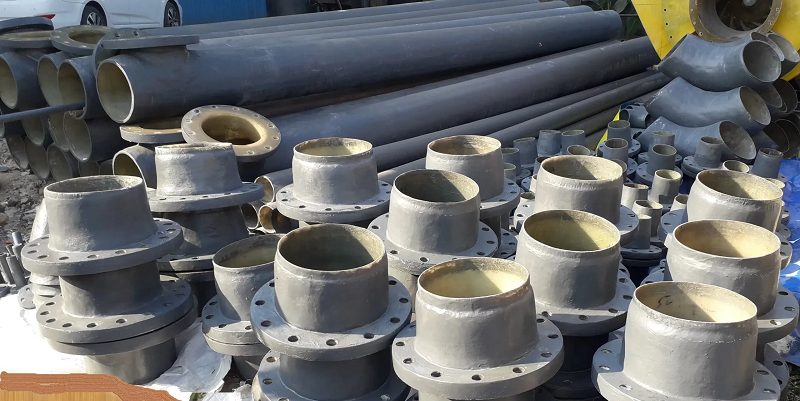
Types of FRP Pipe Fittings
- Elbows: Elbows are used to change the direction of the piping system. They are available in various angles, such as 45° and 90°, allowing for flexibility in system design. Elbows are designed to match the FRP pipe class in terms of pressure rating and temperature tolerance, ensuring that the joint remains secure and leak-free under operational conditions.
- Tees: Tees allow for branching of the piping system, enabling the connection of multiple pipes. They are commonly used in systems that require the distribution or collection of fluids. Tees are designed to accommodate the same temperature and pressure ratings as the FRP pipes they connect, ensuring consistent performance throughout the system.
- Flanges: Flanges provide a means of connecting FRP pipes to other components, such as valves, pumps, and tanks. They are designed with bolt holes to facilitate secure connections that can be easily assembled and disassembled. Flanges are available in different pressure classes and can be matched to the FRP pipe class to ensure compatibility and a secure seal.
- Reducers: Reducers are used to connect pipes of different diameters, allowing for a smooth transition between sections of the piping system. They are essential in applications where changes in flow rate or pressure are required. Like other fittings, reducers must be selected based on the FRP pipe class to ensure they can handle the operational conditions.
Role of Fittings in a Piping System
- Ensuring System Integrity: Fittings are critical components that ensure the integrity and functionality of the piping system. They provide secure connections that prevent leaks and maintain the flow of fluids. By selecting fittings that match the FRP pipe class, engineers can ensure that the joints and connections are as robust and reliable as the pipes themselves.
- Facilitating System Design: The availability of various types of fittings allows for flexible and complex system designs. Fittings enable changes in direction, branching, and the integration of additional components, making it possible to design a piping system that meets specific operational requirements. The selection of appropriate fittings ensures that the system operates efficiently and safely.
Applications of Different FRP Pipe Classes
Different FRP pipe classes are used in a variety of applications, depending on their pressure ratings, temperature tolerance, and structural properties. For example, China CPVC FRP pipes are widely recognized for their versatility and performance in various industries. Understanding these classes helps engineers and designers select the right pipe for specific uses, ensuring optimal performance and safety.
Chemical Processing
- High-Pressure and High-Temperature Applications: In chemical processing plants, FRP pipes are often used to transport aggressive chemicals under high pressure and temperature conditions. Higher FRP pipe classes, which offer elevated pressure ratings and temperature tolerance, are essential for these applications. Selecting the right class ensures that the pipe can handle the corrosive nature of the fluids and the demanding operational conditions without risk of failure.
- Corrosion Resistance: Chemical processing environments require pipes that can resist corrosion caused by acids, solvents, and other reactive substances. By choosing an FRP pipe class with the appropriate chemical resistance and mechanical properties, engineers can ensure the safe and efficient transport of chemicals throughout the plant. frp pipe cladding also plays a critical role in enhancing the corrosion resistance, acting as an extra layer of defense against harsh chemicals and environmental conditions.
Water and Wastewater Treatment
- Underground Installations: In water and wastewater treatment facilities, FRP pipes are commonly installed underground, where they are subjected to soil pressure and potential external loads. Selecting an FRP pipe class with the appropriate stiffness and structural strength is crucial to ensure that the pipe can withstand these forces without deformation or failure.
- Pressure Variations: Water and wastewater systems often experience variations in pressure due to changes in flow rate and pump operation. By selecting an FRP pipe class that can handle these pressure fluctuations, designers can ensure that the system operates reliably and that the pipes maintain their integrity over time.
Oil and Gas Transport
- High-Pressure Fluid Transfer: In the oil and gas industry, FRP pipes are used for the high-pressure transport of hydrocarbons, produced water, and chemical additives. FRP winding pipes for industrial applications are particularly well-suited for these tasks due to their ability to withstand intense pressures and harsh environmental conditions. Higher FRP pipe classes, with elevated pressure ratings, are necessary to ensure the piping system can safely transport fluids without risk of leaks or bursts.
- Temperature Extremes: Oil and gas transport may involve exposure to temperature extremes, both hot and cold. Selecting an FRP pipe class with the appropriate temperature tolerance ensures that the pipe can withstand these conditions without compromising its performance.
How Resin Types Impact FRP Pipe Tensile Strength
Importance of the FRP Pipe Thickness Chart
FRP pipe experts working within the FRP Pipe Class domain focus on the classification and standardization of FRP pipes based on their design, material properties, and performance capabilities.
The FRP pipe thickness chart plays a critical role in determining the appropriate wall thickness for different pipe classes. This chart provides valuable information that guides users in selecting the correct pipe size and thickness for specific applications. Wall thickness significantly impacts the pipe’s pressure rating, mechanical strength, and overall suitability for various environments.
In many applications, FRP pipes must withstand varying levels of pressure and stress. The thickness of the pipe wall directly correlates with its ability to handle internal pressures. Thicker walls are generally required for higher pressure applications, ensuring that the pipe can maintain integrity and prevent failure. For example, in chemical processing or oil and gas applications where high pressure is common, selecting the appropriate thickness is vital for safety and performance.
Additionally, the mechanical strength of an FRP pipe is influenced by its wall thickness. A thicker wall not only increases the pipe’s ability to withstand pressure but also enhances its resistance to impacts and external forces. This is particularly important in environments where physical damage from external sources is a concern. By consulting the FRP pipe thickness chart, engineers can ensure that the selected pipe has sufficient strength to endure operational demands without risk of rupture or deformation.
The FRP pipe thickness chart also helps in determining the suitability of the pipe for various applications. Different industries have unique requirements regarding pipe thickness based on the nature of the fluids being transported, temperature variations, and environmental conditions. For example, pipes used in wastewater treatment may require different thicknesses compared to those used in potable water systems. The chart provides the necessary CSI specifications FRP pipe to match the pipe’s thickness with its intended use, ensuring compliance with industry standards and regulations.
Applications of FRP Pipe Wet Layup in Industrial Rehabilitation
Types of FRP Pipe Classes
FRP pipes are categorized into various classes, each designed for specific applications and operating conditions. Understanding these classes is crucial for selecting the right pipe for a project.
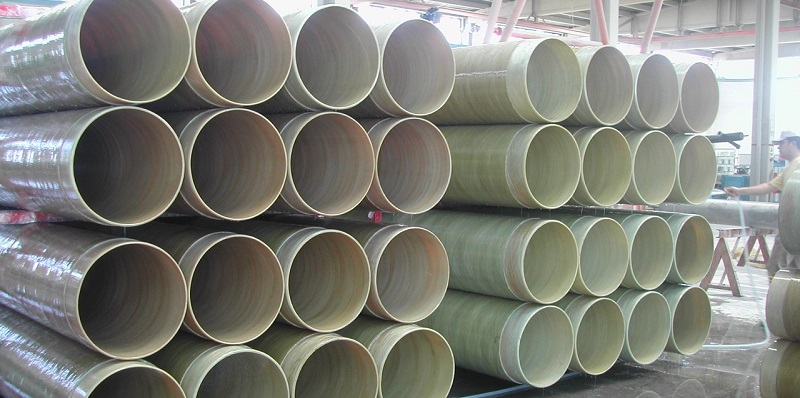
Class A FRP Pipes
Class A FRP pipes fire rating are known for their high resistance to fire and are often used in applications where fire safety is paramount. These pipes are designed to meet stringent fire safety standards, making them suitable for installations in commercial buildings, transportation infrastructure, and other areas where fire risks are a concern. The combination of specific resin types and construction methods allows Class A pipes to achieve the required flame spread ratings, ensuring they do not contribute significantly to fire growth.
Class 1 FRP Pipes
Class 1 FRP pipes typically refer to pipes that have undergone rigorous testing to meet specific pressure and temperature ratings. These pipes are suitable for high-pressure applications and are often used in industries such as oil and gas, where operational integrity is critical. The selection of resin and reinforcement materials in Class 1 pipes ensures they can withstand significant mechanical stresses while maintaining chemical resistance.
Chemical-Resistant FRP Pipes
This class includes pipes formulated with specialty resins that enhance their ability to resist aggressive chemicals. These pipes are essential in chemical processing facilities, where exposure to harsh substances is common. The specific resin types used in chemical-resistant FRP pipes, such as vinyl ester or epoxy, provide enhanced durability and longevity in demanding environments.
High-Strength FRP Pipes
High-strength FRP pipes are designed to handle extreme mechanical loads and pressures. These pipes are commonly used in applications where both chemical resistance and mechanical integrity are required. The advanced manufacturing techniques, such as filament winding, result in a pipe that has superior strength characteristics, making it ideal for structural applications and high-pressure systems.
Selection Criteria for FRP Pipe Class
When selecting the appropriate FRP pipe class, several factors must be considered to ensure optimal performance and safety.
Fluid Characteristics
The type of fluid being transported plays a significant role in determining the right pipe class. For instance, if the fluid is corrosive, a chemical-resistant pipe class would be essential. Understanding the chemical properties of the fluid, including pH levels, temperature, and potential for crystallization, helps inform the selection of the appropriate pipe material and class.
Operating Conditions
The operating conditions, such as temperature and pressure, are critical in selecting the right FRP pipe class. Higher pressures and temperatures typically require thicker walls and stronger materials to ensure the pipe can withstand the operational demands. By analyzing the specific conditions under which the pipe will operate, engineers can choose a pipe class that meets those requirements.
Environmental Factors
Consideration of environmental factors is also vital when selecting an FRP pipe class. Pipes exposed to outdoor conditions must resist UV radiation and temperature fluctuations, which can exacerbate issues like FRP pipe deflection if not properly addressed. Additionally, installations in areas prone to physical impacts or environmental degradation require a robust selection of materials to ensure durability and minimize the risk of deflection under stress. Proper design and material selection help maintain the structural integrity of the piping system in demanding environments.
Compliance with Standards
Compliance with industry standards and regulations is essential for any piping system. Each FRP pipe class must meet specific codes related to safety, performance, and environmental impact. Understanding these standards is critical to ensure that the selected pipe class is suitable for its intended application and adheres to legal requirements.
Top Challenges Contractors Face in Securing FRP Pipes Tenders
FAQs about Frp Pipe Class
Class A FRP (Fiberglass Reinforced Plastic) refers to a specific rating for flame spread and smoke development. In many building codes and standards, materials are classified based on their fire-resistant properties, and Class A is considered the highest level of fire resistance for FRP materials. This classification means that the FRP material has a flame spread index of 25 or less and a smoke-developed index of 450 or less. These ratings indicate that Class A FRP will not contribute significantly to the spread of fire or the production of smoke, making it a safer choice for applications where fire safety is a concern.
Class A FRP is commonly used in industries where stringent fire safety standards are required, such as in the construction of commercial buildings, transportation facilities, and certain industrial environments. It is important to note that while Class A FRP offers enhanced fire resistance compared to lower classes, it is still crucial to follow proper fire safety guidelines and use the material in conjunction with other fire protection measures. The enhanced safety features of Class A FRP make it a preferred option for projects that demand high-performance materials with reduced fire risk.
FRP (Fiberglass Reinforced Plastic) pipe is a composite pipe made from a polymer matrix reinforced with glass fibers. The polymer matrix, typically composed of thermosetting resins like polyester, vinyl ester, or epoxy, provides chemical resistance and acts as a binder for the glass fibers. The glass fibers give the pipe its structural strength and durability, allowing it to withstand high pressures, mechanical stresses, and corrosive environments. FRP pipes are known for their excellent corrosion resistance, lightweight nature, and high strength-to-weight ratio, making them suitable for a variety of industrial applications.
FRP pipes are commonly used in industries such as chemical processing, wastewater treatment, oil and gas, and marine environments. They are particularly advantageous in situations where traditional materials like metal or PVC may fail due to corrosion, chemical attack, or mechanical wear. FRP pipes can be manufactured in various sizes and configurations to meet the specific needs of different applications. They can also be customized with different resins and reinforcement patterns to enhance properties such as chemical resistance, thermal stability, and mechanical strength. This versatility makes FRP pipes an ideal choice for transporting corrosive fluids, gases, and slurries in demanding industrial settings.
Class 1 pipe refers to a classification related to fire safety and performance standards. In the context of piping materials like FRP, a Class 1 pipe typically means that the material has passed stringent fire safety tests, indicating a high level of fire resistance. Class 1 pipes are designed to have a low flame spread and smoke production, minimizing their contribution to fire growth and reducing the risk to building occupants. These pipes are often used in environments where fire safety is a priority, such as in buildings, tunnels, and transport systems.
In some standards, the term “Class 1” can also refer to the pressure rating of a pipe, denoting its ability to withstand specific internal pressures. In such cases, Class 1 pipes are designed to handle higher pressure conditions compared to lower-class pipes. The exact definition of Class 1 can vary depending on the industry and the specific standards being referenced, so it’s essential to consult the relevant guidelines and codes to understand the specific requirements and characteristics of Class 1 pipes in a given application.
FRP (Fiber-Reinforced Plastic) piping is governed by ASME B31.3, “Process Piping,” which provides the requirements for the design, materials, fabrication, assembly, erection, examination, inspection, and testing of piping systems, including those made from non-metallic materials like FRP. ASME B31.3 includes provisions for evaluating stress, pressure limits, and flexibility for FRP materials. Additionally, ASME RTP-1 is a relevant standard specific to reinforced thermoset plastic (RTP) equipment, often applicable when fabricating pressure vessels or large-diameter piping systems. It covers design, fabrication, and quality assurance requirements for FRP equipment.
The design considerations for FRP piping include understanding its anisotropic nature, as its mechanical properties differ in various directions, and accounting for the environmental factors that affect material performance. These standards ensure that FRP piping systems are reliable and safe for applications in industries such as chemical processing, desalination, and wastewater treatment.
The difference between Class 1 and Class 2 PVC pipe primarily lies in their pressure rating and wall thickness, which correspond to their intended application.
Class 1 PVC pipes typically have a higher pressure rating and thicker walls compared to Class 2. They are designed for more demanding applications, such as high-pressure water distribution, irrigation systems, and industrial fluid transport. The thicker wall provides added durability but results in a heavier and costlier pipe.
Class 2 PVC pipes have a lower pressure rating and thinner walls. They are suitable for less demanding applications like gravity-fed water systems or drainage. The reduced wall thickness makes them lighter and more cost-effective but less durable under high pressure or mechanical stress.
When integrating PVC pipes into FRP piping systems, the compatibility of the classes and the specific pressure and temperature requirements of the system should be carefully considered.
FRP stands for Fiber-Reinforced Plastic, a composite material made by combining a polymer matrix (such as epoxy, polyester, or vinyl ester) with reinforcing fibers (commonly glass, carbon, or aramid). The resulting material combines the lightweight, corrosion-resistant properties of the plastic matrix with the high strength and stiffness provided by the fibers.
In the context of piping, FRP is commonly used in industries requiring materials resistant to chemicals, corrosion, and high temperatures. FRP pipes are popular in chemical processing, wastewater treatment, and oil and gas applications because they offer high durability and low maintenance compared to traditional metallic piping systems. The versatility of FRP allows for customization of its properties, such as fiber orientation and resin type, to meet specific application needs.
The three main types of plastic pipe commonly used in modern applications are:
PVC (Polyvinyl Chloride): Known for its rigidity, chemical resistance, and cost-effectiveness, PVC pipes are widely used in water supply, drainage, and irrigation systems. They come in various pressure ratings and are easy to install and maintain.
HDPE (High-Density Polyethylene): Flexible and highly resistant to impact and corrosion, HDPE pipes are ideal for gas distribution, potable water systems, and sewer lines. Their flexibility makes them suitable for trenchless installation methods.
FRP (Fiber-Reinforced Plastic): Specifically designed for high-strength and corrosion-resistant applications, FRP pipes are used in chemical processing, desalination, and environments with aggressive chemicals or extreme temperatures. They are highly customizable and more durable than traditional thermoplastics.
Each type of pipe serves unique applications, and FRP stands out for its strength and longevity in harsh industrial conditions.
FRP pipe stands for Fiber-Reinforced Plastic pipe, which refers to a specialized type of piping system made from composite materials. These pipes are constructed using a polymer resin (e.g., polyester, epoxy, or vinyl ester) as the matrix, reinforced with fibers such as glass or carbon. The reinforcement process gives the pipe exceptional mechanical strength, making it capable of withstanding high pressures, temperatures, and corrosive environments.
FRP pipes are particularly advantageous in applications like chemical transport, wastewater treatment, and industrial processing where traditional metal or plastic pipes might fail due to corrosion or wear. They are lightweight yet durable, with a lifespan significantly longer than many alternatives. The ability to customize FRP pipe properties (e.g., resistance to specific chemicals, thermal tolerance) makes it a go-to solution for engineers designing systems in demanding environments.

As the editor of GangLong Fiberglass, I have years of experience and in-depth research, focusing on cable tray products, fiberglass solutions, and grille systems. I incorporate years of industry insights and practical experience into every content, committed to promoting the progress of the industry. At GangLong Fiberglass, my commitment is reflected in every product, from innovative cable trays to durable fiberglass solutions and sturdy grille systems. As an authoritative voice in the industry, my goal is to provide valuable information to professionals and businesses and promote forward-looking solutions.

